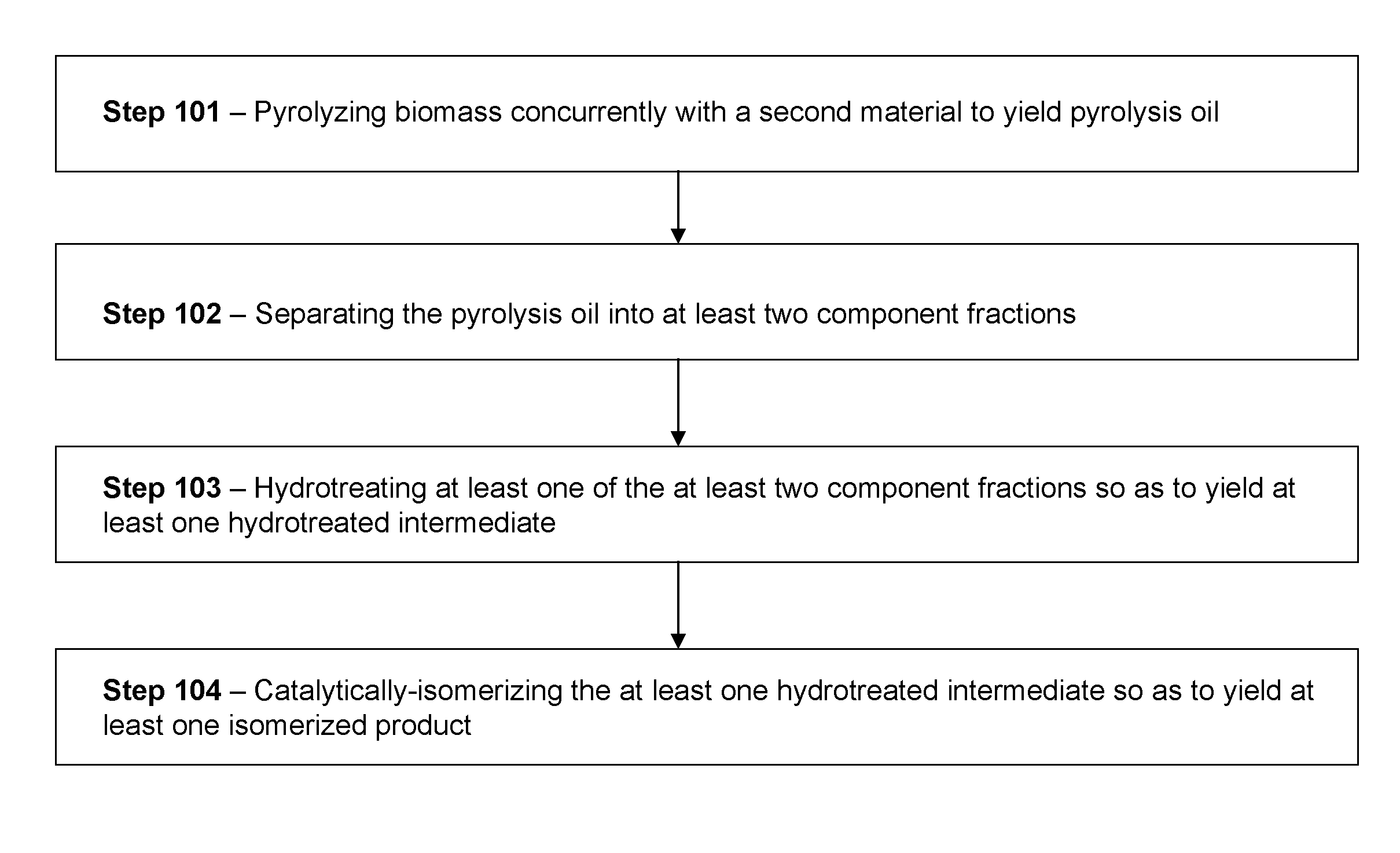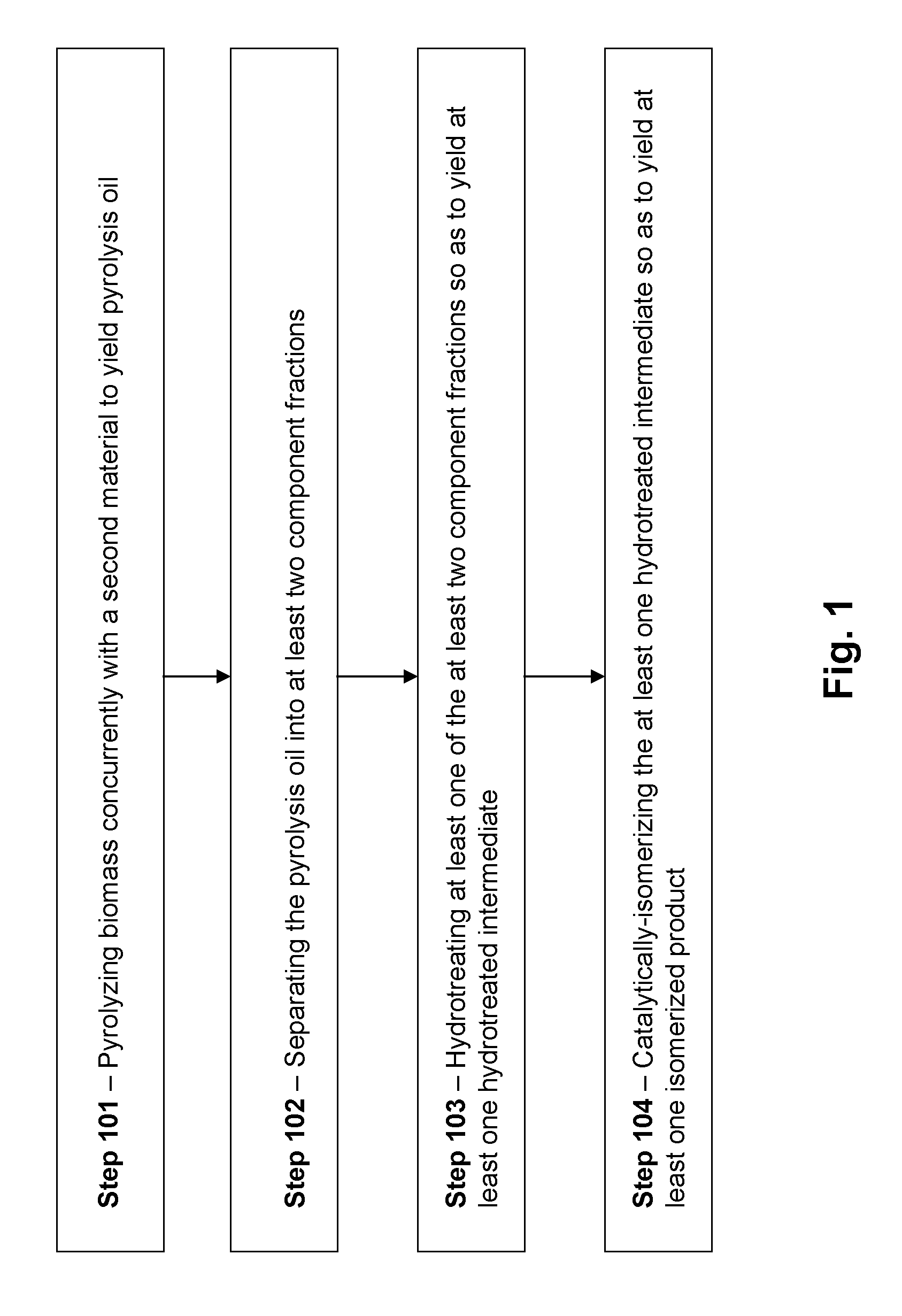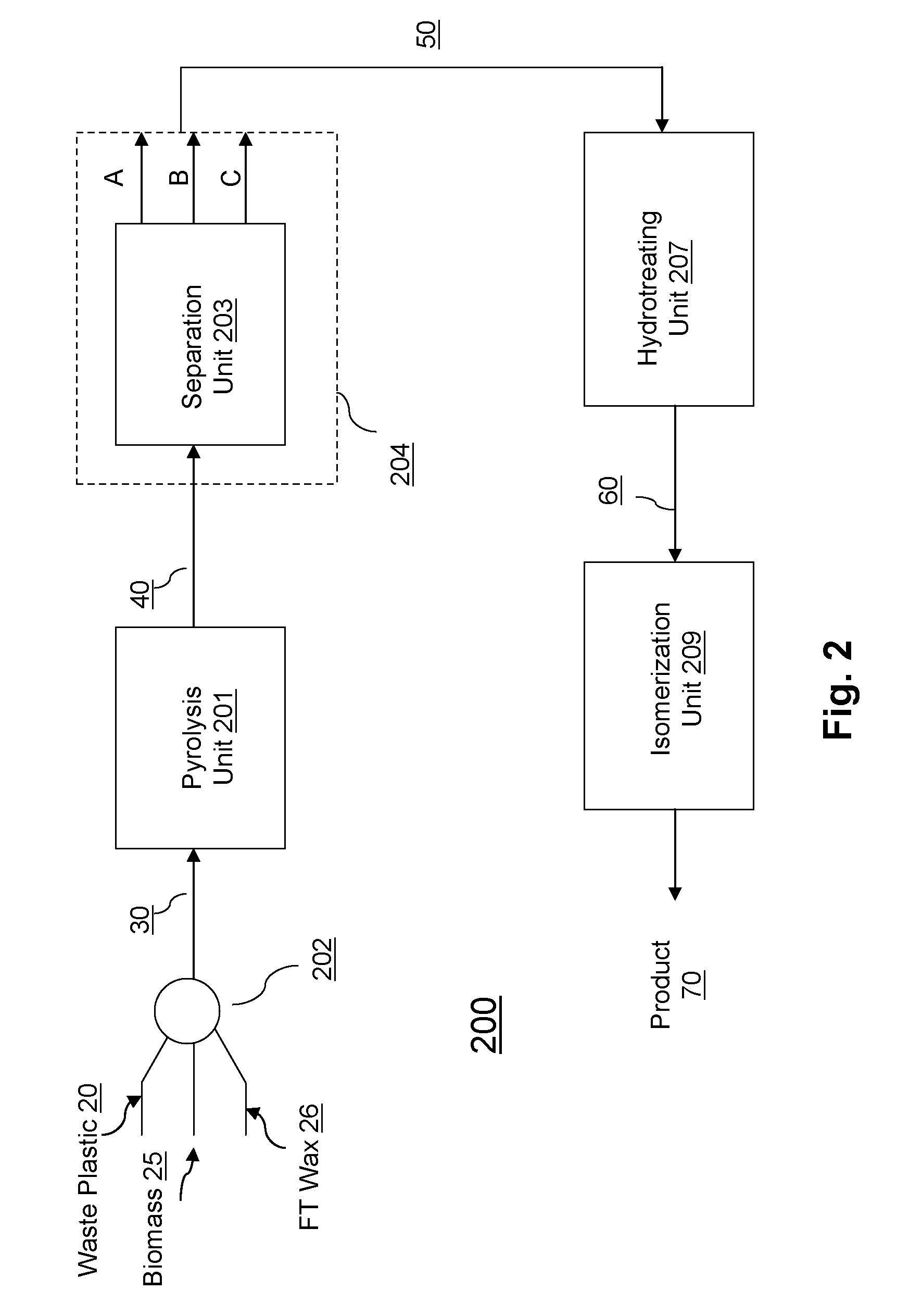System and method for producing transportation fuels from waste plastic and biomass
a technology of transportation fuels and plastics, applied in biofuels, fuels, organic chemistry, etc., can solve the problems of low energy content of biomass, difficult inability to meet the needs of high-efficiency energy production,
- Summary
- Abstract
- Description
- Claims
- Application Information
AI Technical Summary
Benefits of technology
Problems solved by technology
Method used
Image
Examples
Embodiment Construction
[0013]As mentioned above, the present invention is generally directed to methods and systems for producing biofuels via pyrolysis of biomass, waste plastic, and / or Fischer-Tropsch (FT) product feeds / feedstocks. Such method embodiments generally involve the simultaneous pyrolysis of biomass with waste plastic and / or a FT wax. Such system embodiments typically involve combining a biomass feed with a waste plastic and / or F-T waxy feed, and regulating the relative amount of each feed being directed into a pyrolysis unit for the production of a pyrolysis oil (py oil) that is subjectable to further processing. Such further processing can include hydroprocessing and / or isomerization and can yield, depending on conditions and feeds, a variety of biofuel products.
1. DEFINITIONS
[0014]Certain terms are defined throughout this description as they are first used, while certain other terms used in this description are defined below:
[0015]“Biofuel,” as defined herein, is a fuel product at least pa...
PUM
| Property | Measurement | Unit |
|---|---|---|
| temperature | aaaaa | aaaaa |
| temperature | aaaaa | aaaaa |
| temperature | aaaaa | aaaaa |
Abstract
Description
Claims
Application Information
 Login to View More
Login to View More - R&D
- Intellectual Property
- Life Sciences
- Materials
- Tech Scout
- Unparalleled Data Quality
- Higher Quality Content
- 60% Fewer Hallucinations
Browse by: Latest US Patents, China's latest patents, Technical Efficacy Thesaurus, Application Domain, Technology Topic, Popular Technical Reports.
© 2025 PatSnap. All rights reserved.Legal|Privacy policy|Modern Slavery Act Transparency Statement|Sitemap|About US| Contact US: help@patsnap.com



